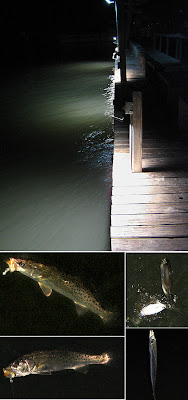 One of the most famous sayings in the sport of fishing is, "You should have been here yesterday!" This was what I heard today, November 19 at Padre Island National Seashore.
One of the most famous sayings in the sport of fishing is, "You should have been here yesterday!" This was what I heard today, November 19 at Padre Island National Seashore.I drove to the North Beach, the one maintained for two-wheel drive cars. The reports from the day before were phenomenal: pompano are running. Some people were catching them by the dozens.
The pompano doesn't get much publicity because it's just not seen that often, but it's famous for one very good reason: it's a great delicacy. And it's a fun fish to catch, a hard fighter.
People I saw when I arrived told me they caught 18 yesterday, and it was so much fun they came back today. But after two hours they only had one fish.
I put on the bait that was so successful according to reports: shrimp with the artificial shrimp strips called Fishbites (hook size 1/0).
The bait just sat out in the surf. I reeled it in and cast it back out. No fish for the better part of an hour.
The day did turn out okay: I moved up the beach and found some other people who were catching fish. I caught two pompano, 13 inches and 14 inches long. And yes, they do taste sooooo good.
I just wish I was there yesterday.




















